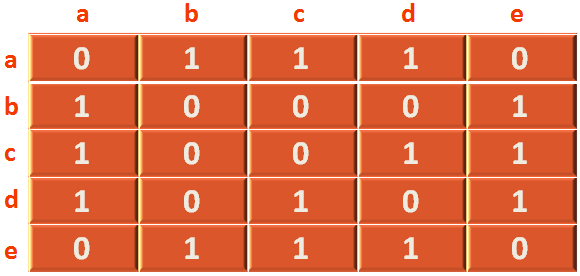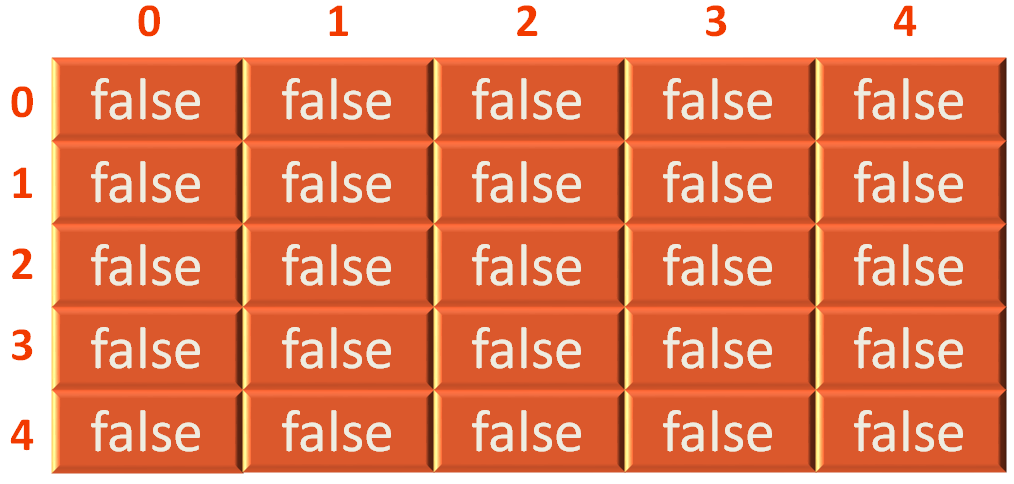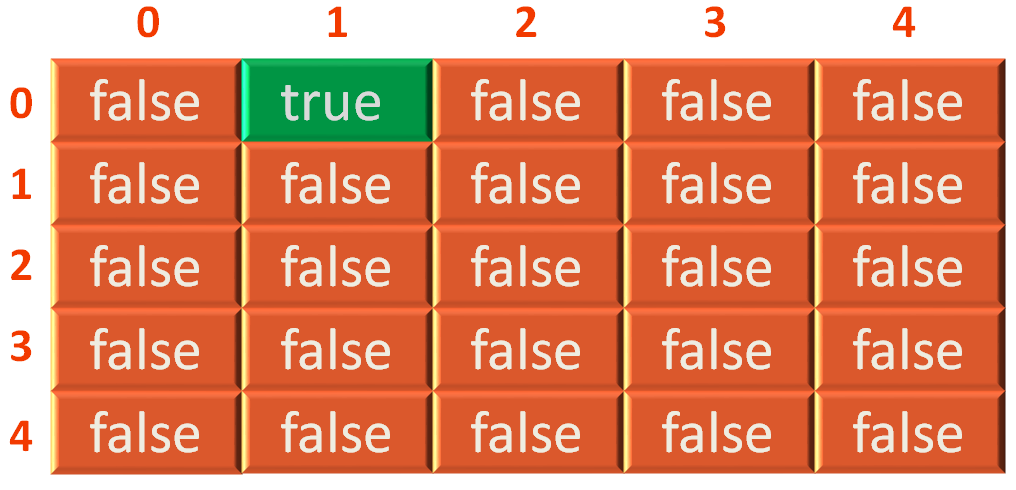

class AdjacencyMatrixGraph {
fun insertEdge(adjacentMatrix: Array<BooleanArray>, i: Int, j: Int) {
adjacentMatrix[i][j] = true;
}
fun removeEdge(adjacentMatrix: Array<Array<Boolean>>, i: Int, j: Int) {
adjacentMatrix[i][j] = false;
}
fun printAdjacencyMatrix(adjacentMatrix: Array<BooleanArray>) {
for (i in 0..(adjacentMatrix.size-1)) {
for (j in 0..(adjacentMatrix[i].size-1)) {
var value = if (adjacentMatrix[i][j]) 1 else 0;
print("| $value |");
}
println();
}
}
}
fun main(arr: Array<String>) {
var adjacencyMatrixGraph = AdjacencyMatrixGraph();
var V = 5;
var adjacentMatrix = Array(V) { BooleanArray(V) };
//Insert Edges
adjacencyMatrixGraph.insertEdge(adjacentMatrix, 0, 1);
adjacencyMatrixGraph.insertEdge(adjacentMatrix, 0, 2);
adjacencyMatrixGraph.insertEdge(adjacentMatrix, 0, 3);
adjacencyMatrixGraph.insertEdge(adjacentMatrix, 1, 0);
adjacencyMatrixGraph.insertEdge(adjacentMatrix, 1 ,4);
adjacencyMatrixGraph.insertEdge(adjacentMatrix, 2, 0);
adjacencyMatrixGraph.insertEdge(adjacentMatrix, 2, 3);
adjacencyMatrixGraph.insertEdge(adjacentMatrix, 2, 4);
adjacencyMatrixGraph.insertEdge(adjacentMatrix, 3, 0);
adjacencyMatrixGraph.insertEdge(adjacentMatrix, 3 ,2);
adjacencyMatrixGraph.insertEdge(adjacentMatrix, 3, 4);
adjacencyMatrixGraph.insertEdge(adjacentMatrix, 4, 3);
adjacencyMatrixGraph.insertEdge(adjacentMatrix, 4, 2);
adjacencyMatrixGraph.insertEdge(adjacentMatrix, 4, 1);
println("+----------------------------------------------------------+");
adjacencyMatrixGraph.printAdjacencyMatrix(adjacentMatrix);
println("+----------------------------------------------------------+");
}
+----------------------------------------------------------+ | 0 || 1 || 1 || 1 || 0 | | 1 || 0 || 0 || 0 || 1 | | 1 || 0 || 0 || 1 || 1 | | 1 || 0 || 1 || 0 || 1 | | 0 || 1 || 1 || 1 || 0 | +----------------------------------------------------------+
The code for Adjacency Matrix is quite simple.
There are two important methods defined above :
As the name of the method suggests insertEdge(...), is used to add an Edge to the Adjacency Matrix.
fun insertEdge(adjacentMatrix: Array<BooleanArray>, i: Int, j: Int) {
adjacentMatrix[i][j] = true;
}So, the actual adjacency matrix, we are going to create, looks like the below structure,

Now, if we look at the main(...) method. We create a 2D array, that holds either true or false.
var V = 5;
var adjacentMatrix = Array(V) { BooleanArray(V) };So, the above line creates a 2D array with 5 rows and 5 columns that initially contains false.

Now, all we need to do is, wherever we want to insert an edge. We will mark it with value true.
Say, for example :
There is an edge in [0][1] (As mentioned in the adjacency matrix above).
All we are doing is, calling the fun insertEdge(...) method,
adjacencyMatrixGraph.insertEdge(adjacentMatrix, 0, 1);
and passing 0 and 1 as parameters.
And in the fun insertEdge(...) method, we have the below line,
adjacentMatrix[i][j] = true;
Now, since value of i = 0 and j = 1,
adjacentMatrix[0][1] = true;
And adjacentMatrix[0][1] is marked to true.

In other words, we have inserted an edge in adjacentMatrix[0][1] above.
Similarly, we insert the edges one by one, calling the fun insertEdge(...) method.
adjacencyMatrixGraph.insertEdge(adjacentMatrix, 0, 2); adjacencyMatrixGraph.insertEdge(adjacentMatrix, 0, 3); ... ... ...
Even, to delete an Edge, we follow the same steps.
As we know, there is an Edge in [0][2]. To remove it, all we need to do is call,
adjacencyMatrixGraph.removeEdge(adjacentMatrix, 0, 2);
And mark that particular location to false.
fun removeEdge(adjacentMatrix: Array<Array<Boolean>>, i: Int, j: Int) {
adjacentMatrix[i][j] = false;
}And the Edge is deleted.